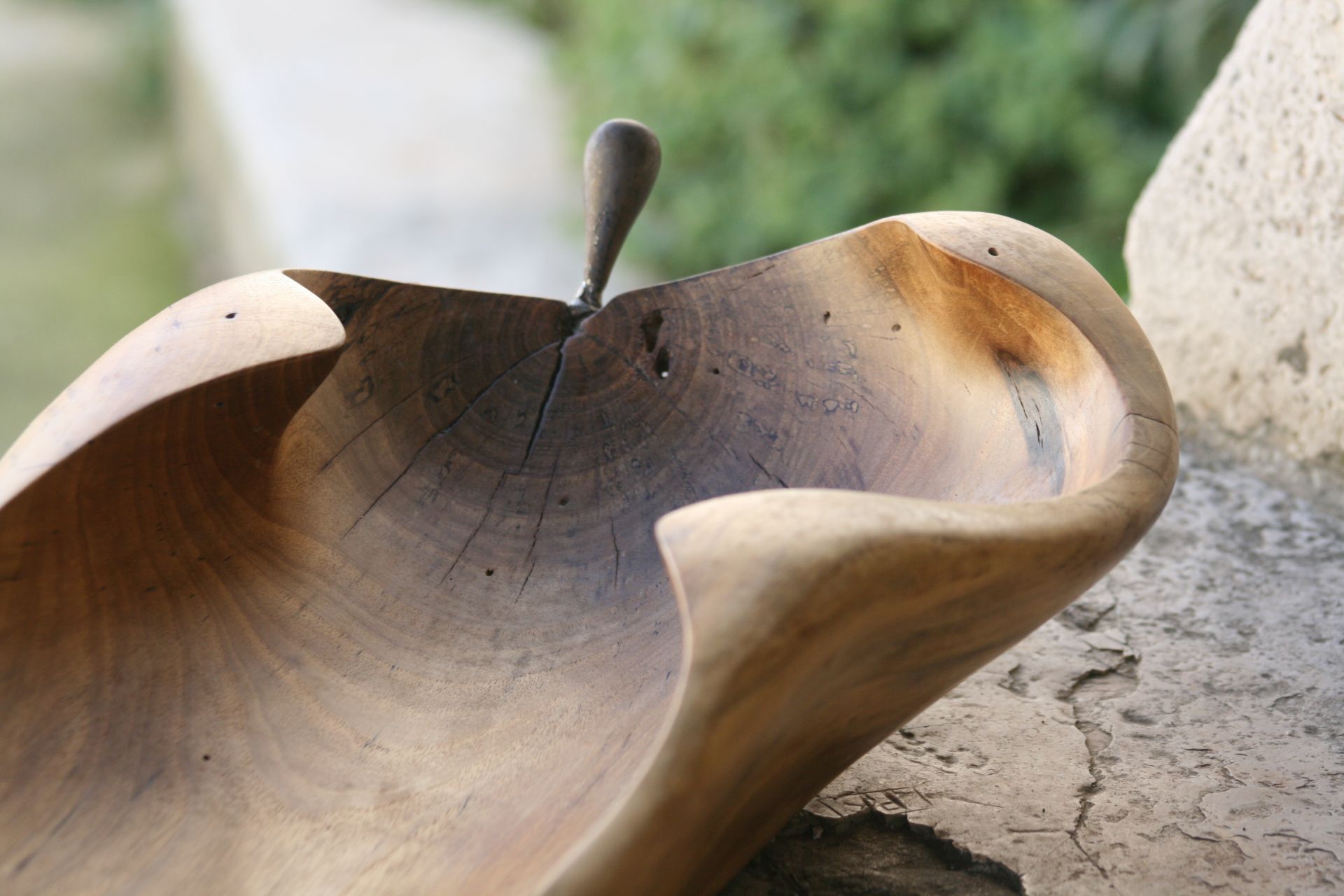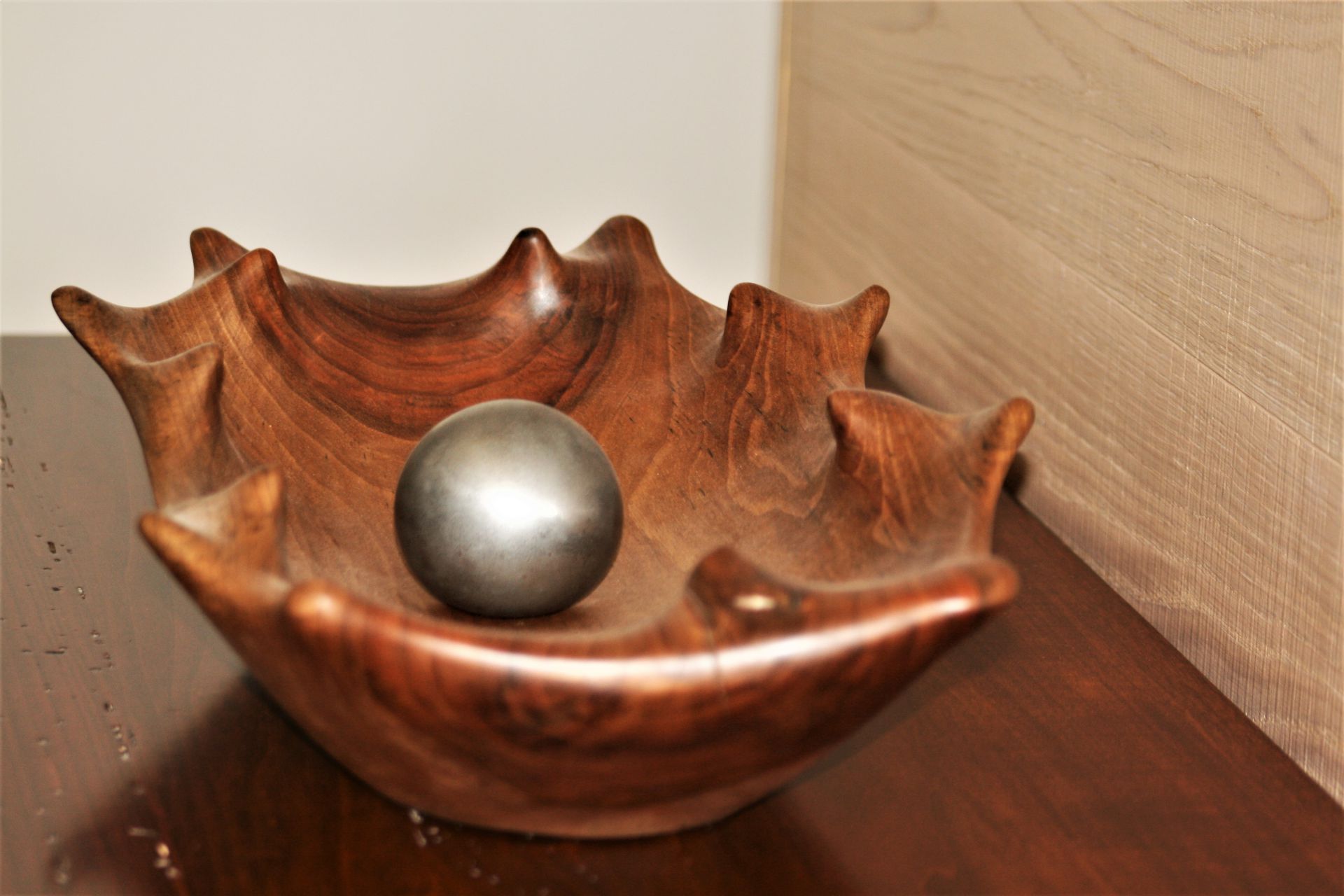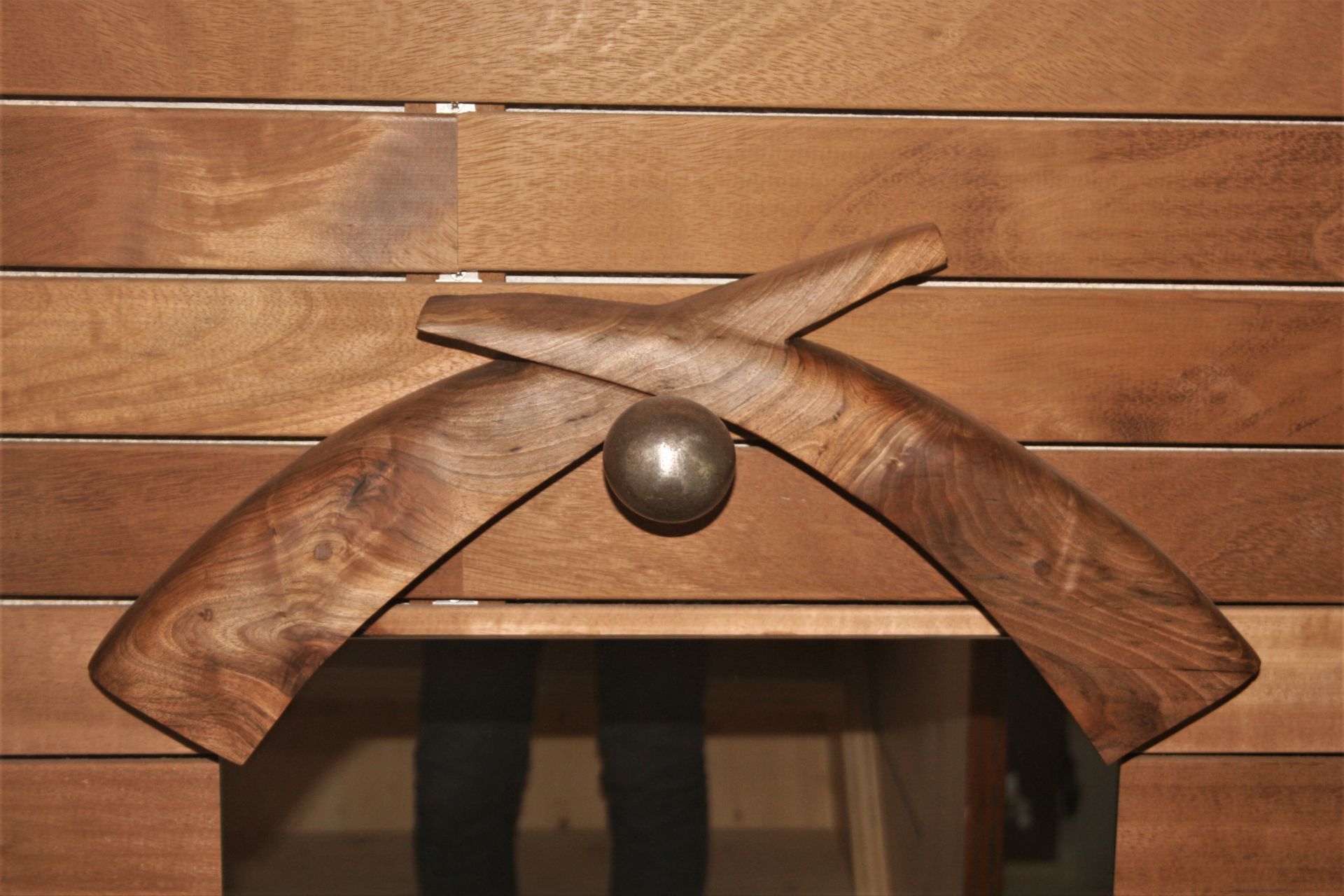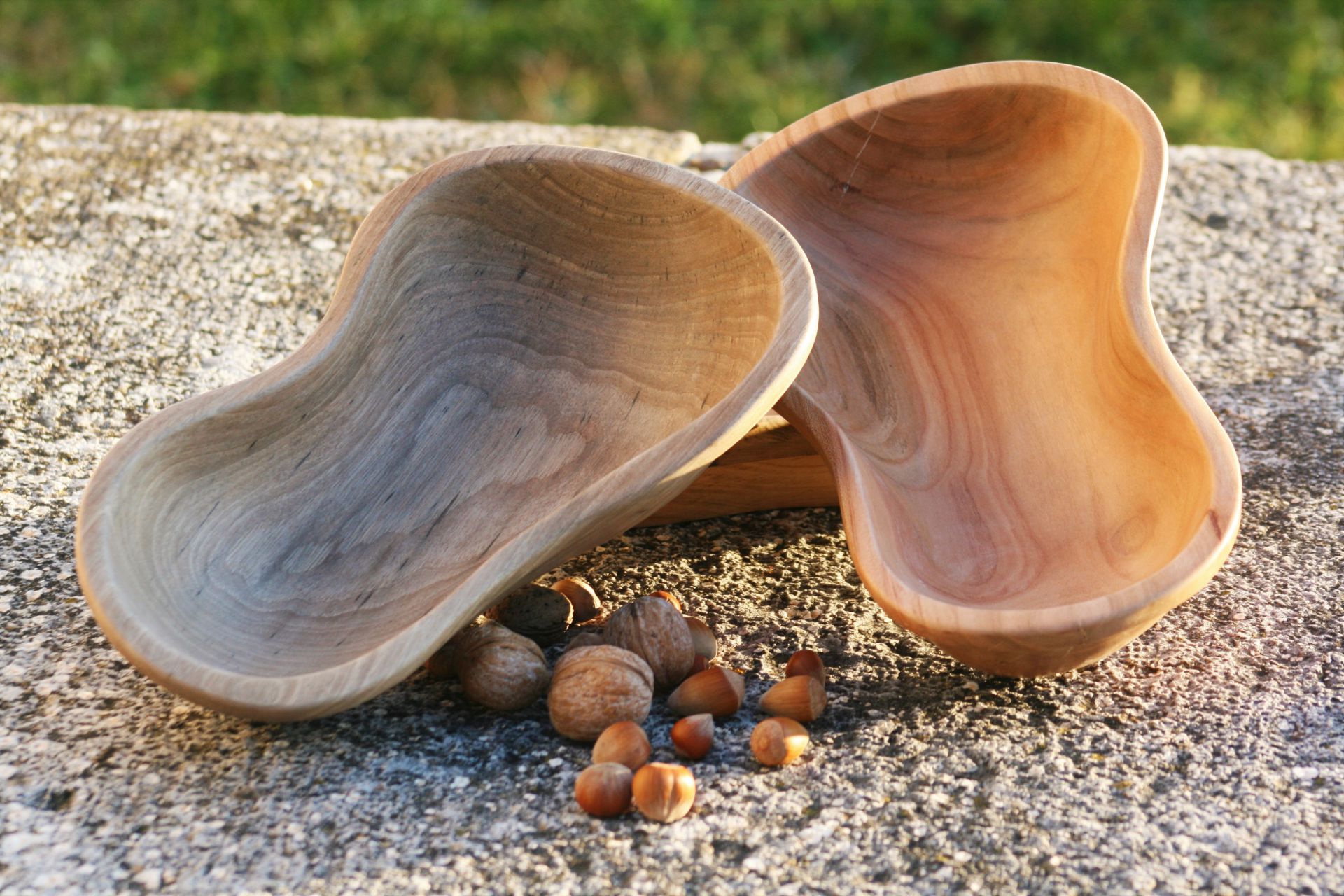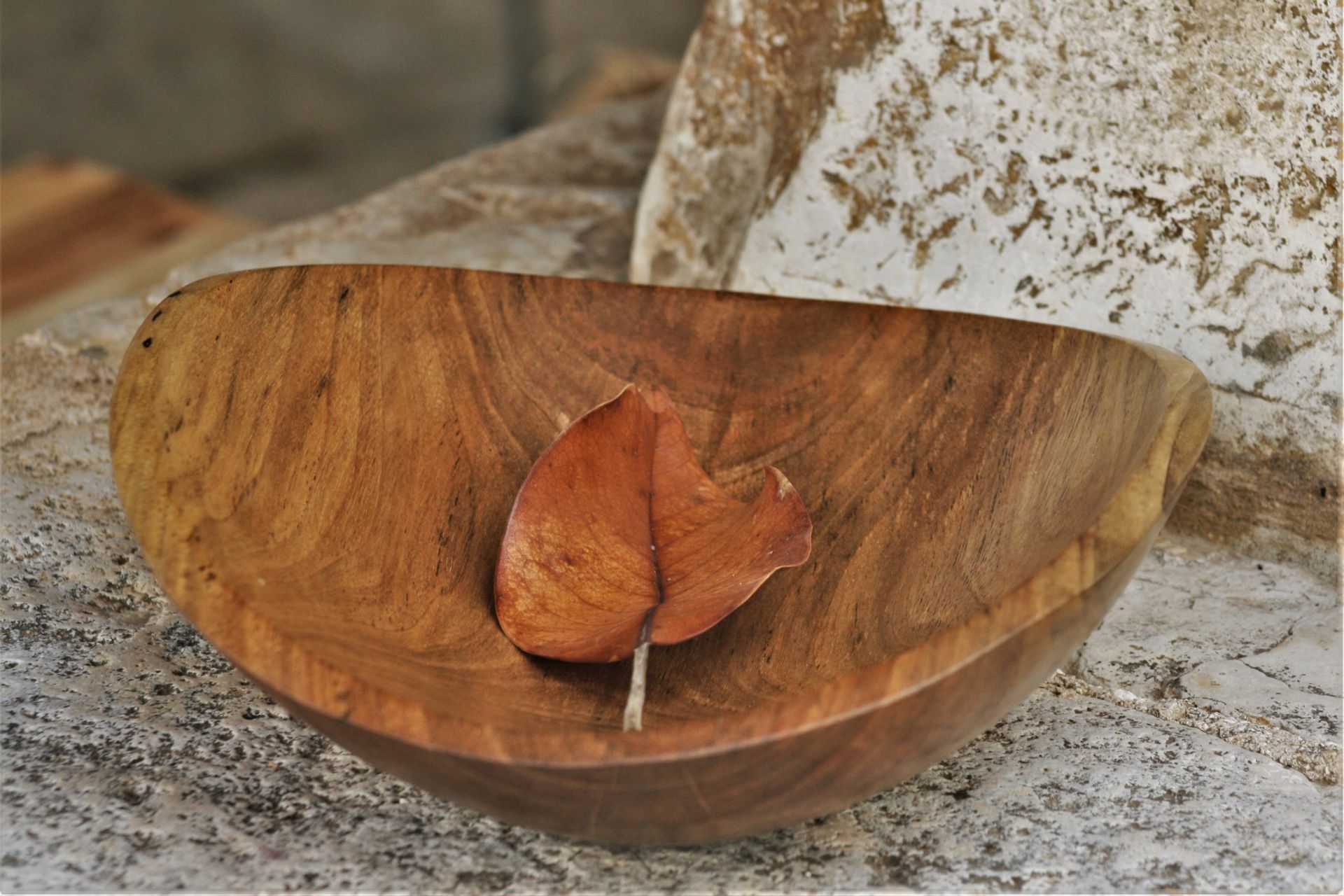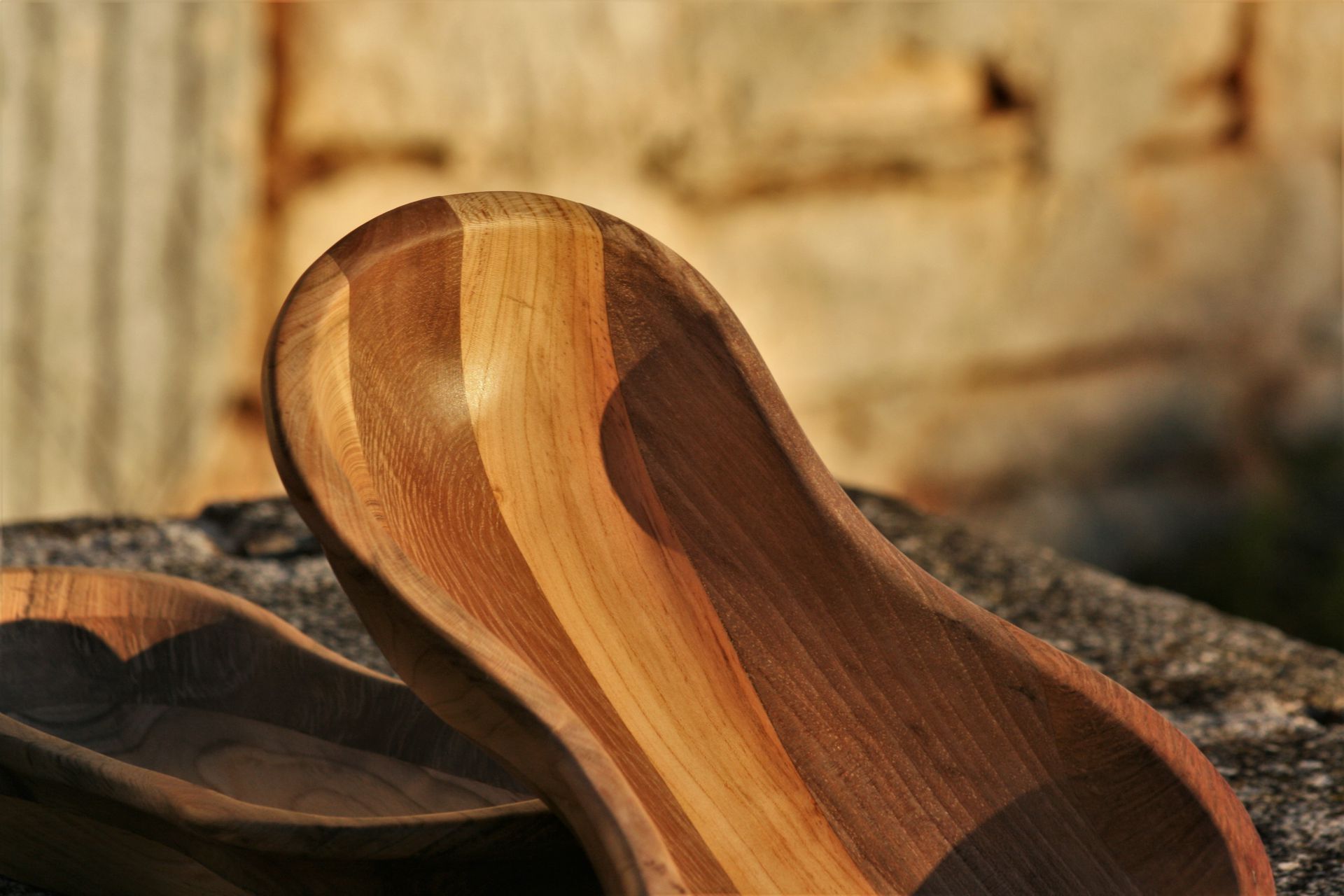Walnut wood
Juglans regia is strong & stable with amazing shades of grayish brown.
Because of its color, hardness and grain it is prized as furniture and carving wood. One of the more costly types of wood.
In sanisio we use walnut wood mainly for bowls.
Juglans regia translated from Latin would mean nut of [the god] Jupiter. Royal walnut. Walnut tree has been known to mankind since 7000 B.C.
There are two most commercially important species grown for the timber and nuts – the Persian walnut and the black walnut. Juglans regia is the best-known member of the genus, also known under the name of English or European (common) walnut. It can be found in southeast Europe (some sources say it is native from Balkans) and southwest and central Asia. This sort is the source of most common form of edible walnuts for human consumption. It is the only specie which has a large nut and thin shell.
One can see crinkles in walnuts both inside and outside. Considered as a symbol of intelligence, healthy benefits of its edible seeds are many. They are a traditional feature of Iranian cuisine and one of key ingredients for the Balkan’s famous dessert baklava.
Very strong and stable wood. One of the more costly types of wood. Walnut wood is dense and tight-grained. Because of its color, hardness and grain it is prized as furniture and carving wood.
One of the walnut wood characteristics are its shades. Color can vary from lighter pale to dark chocolate brown. Sometimes with gray, purple or reddish streaks. The heartwood and sapwood are easily distinguishable: while the heart has this dark brown color, sapwood is much paler, grayish to almost white. The color of heartwood varies depending upon location and age.
The texture is usually straight but can have interesting curly patterns. Irregular grains can sometime lead to tearout if one is not being careful. But otherwise, it is easy to work with.
Very strong and stable wood. One of the more costly types of wood. Walnut wood is dense and tight-grained. Because of its color, hardness and grain it is prized as furniture and carving wood.
One of the walnut wood characteristics are its shades. Color can vary from lighter pale to dark chocolate brown. Sometimes with gray, purple or reddish streaks. The heartwood and sapwood are easily distinguishable: while the heart has this dark brown color, sapwood is much paler, grayish to almost white. The color of heartwood varies depending upon location and age.
The texture is usually straight but can have interesting curly patterns. Irregular grains can sometime lead to tearout if one is not being careful. But otherwise, it is easy to work with.
Another walnut wood characteristics are the burls. And veneer sliced from that part are the most valuable and highly prized by cabinet makers and prestige car manufacturers. It is also used for musical instruments, in lutherie (string instruments such as guitars or violins) and for the body of pipe organs.
It is interesting that if it is cooked immediately after cutting retains a bright brown color. If the hydro-thermal process is applied after six months its structure significantly darkens, all the way to extremely dark gray-brownish color. It has a low specific weight, but it can be found in large quantities and is thankful for designing larger items.
In sanisio we use it for making all kind and sizes of bowls. But also for jewellery, bracelets or necklaces patched from different types of wood.


